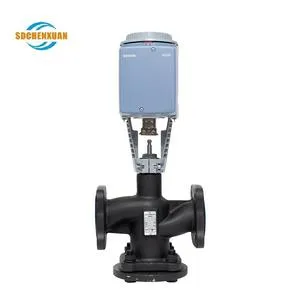A temperature control valve for hot water, also known as a thermostatic mixing valve (TMV) or a tempering valve, is a device used to control and maintain a safe and consistent temperature of hot water in various applications. It is primarily used to prevent scalding or burns caused by excessively hot water.

The temperature control valve works by blending hot water from a heater or a hot water source with cold water to achieve a desired and safe outlet temperature. It typically consists of a mixing chamber and a thermostatic element.
Here's how a temperature control valve operates:
1.Mixing Chamber: The valve has separate hot water and cold water inlet ports, which are connected to the appropriate water supply sources. The two streams of water enter the mixing chamber.
2.Thermostatic Element: Inside the valve, there is a thermostatic element, such as a wax-based cartridge or a bimetallic coil. This element is sensitive to temperature changes.
3.Temperature Adjustment: The user can set the desired outlet temperature by adjusting the valve's temperature setting. This setting determines the balance between the amount of hot and cold water entering the mixing chamber.
4.Mixing Process: As hot and cold water flow into the mixing chamber, the thermostatic element responds to the temperature of the mixed water. It expands or contracts based on the temperature changes.
5.Valve Operation: The movement of the thermostatic element controls the valve's internal mechanism. If the mixed water is too hot, the element restricts the flow of hot water and increases the flow of cold water to lower the temperature. Conversely, if the mixed water is too cold, the element allows more hot water to flow and reduces the cold water flow.
6.Outlet Temperature Regulation: By continuously sensing and adjusting the hot and cold water flows, the temperature control valve maintains a stable outlet temperature, ensuring that the hot water is within a safe and comfortable range.
Temperature control valves are commonly used in various applications, including domestic hot water systems, showers, baths, commercial buildings, and healthcare facilities. They play a crucial role in preventing scalding accidents and providing a consistent and safe water temperature for users.
It's important to note that temperature control valves should be installed and maintained by qualified professionals to ensure proper operation and compliance with local plumbing codes and safety regulations.